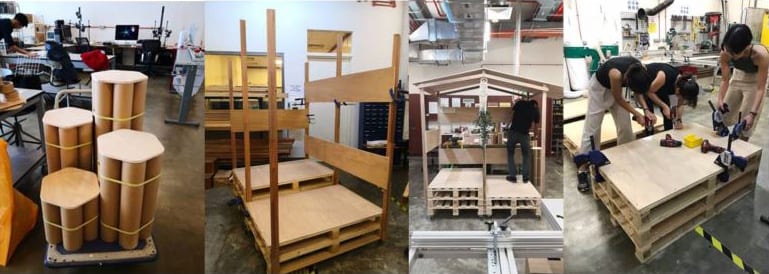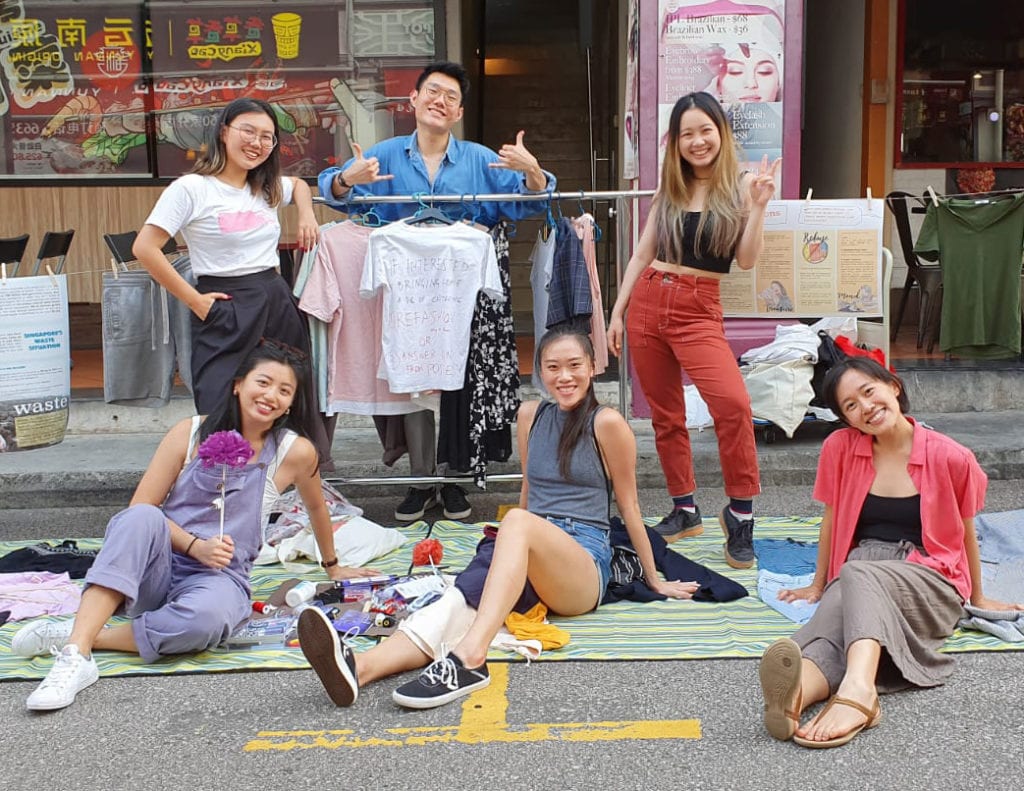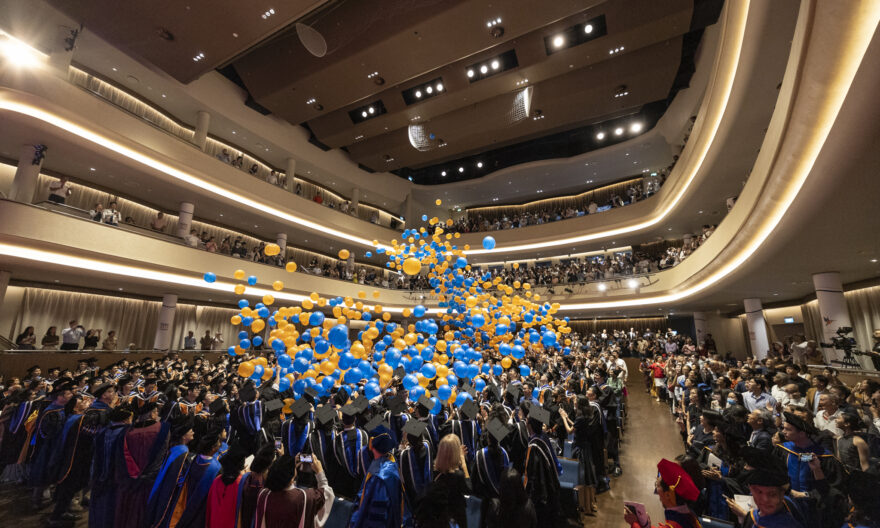Yale-NUS students bring parking lots to life on (PARK)ing Day
(PARK)ing Day is an annual international event that enables local community members to transform parking lots into creative public spaces for one day. In Singapore, the event is organised by the Singapore University of Technology and Design (SUTD) and supported by the Singapore Urban Redevelopment Authority (URA). This year’s (PARK)ing Day took place on 21 September 2019. Vehicles were not allowed to enter Tan Quee Lan Street and Liang Seah Street at Bugis from 1-7 pm, where ordinary parking lots became vibrant, bustling places of activity.
Joy Heng (Class of 2022) enlisted the help of two of her friends: Aaron Lim, now studying at the Bartlett School of Architecture; and Quek Jia Qi, a recent graduate of Goldsmiths, University of London, to form a team to participate in this year’s event. Aaron and Joy were classmates when they were both studying architecture at Singapore Polytechnic.
Joy last participated in (PARK)ing Day in 2014 when she tackled the evolution of play in modernising Singapore. This year, Joy’s team aimed to confront the issue of limited playing spaces in the city.
“In Singapore, regulated playgrounds appear in every neighbourhood, but are often limited to the fixed play structures and their prescribed age groups,” said Joy. The students believe that the ability for people to play freely in cities is crucial for their well-being, but is also often confined by space, or the lack thereof, and isolated by the standardisation of safety design and management practices.
Joy and her friends’ installation was a treehouse filled with variants of local games, which was constructed at the Yale-NUS Fabrication Studio. They see treehouses as a familiar symbol and dream of every child, representing the innate desire to reconnect with the environment through play. Joy also noted that the treehouse can be considered as a “prototypical urban playhouse for all” as its use is shaped by the player’s imagination.
“It is a response to the need for ‘unstructured’ play forms, where space is given to relax and rest, while allowing one’s imagination and creativity to take over,” Joy explained. With the growing urban landscape increasingly leading to the extinction of many forms of play, Joy’s treehouse stands as a point of departure, an encouragement to keep playing in the concrete jungle.
 The treehouse was constructed in the Fabrication Studio at Yale-NUS College. Images provided by Joy Heng/Quek Jia Qi/Eddie Lim.
The treehouse was constructed in the Fabrication Studio at Yale-NUS College. Images provided by Joy Heng/Quek Jia Qi/Eddie Lim.
For Joy, getting ready for the event this year was particularly challenging. Because the event was during exam week and her other team members were not from Yale-NUS, she had a lot of responsibility overseeing the production process. Nevertheless, she is grateful to her friends from Yale-NUS who helped her with the production and installation, especially her suitemates, as well as Muhammad Amir bin Salim, the Yale-NUS staff member in charge of woodworking at the Fabrication Studio.
Joy said that choosing to come to Yale-NUS instead of going to architecture school did not mark an end to her passion for architecture. Conversely, she said that Yale-NUS broadened her perspectives on the built environment with various other fields of study. “I’m always appreciative that the Urban Studies faculty have a wide array of interests and professional experience that provided me with the support and resources I needed to see this project to completion,” Joy said.
Tan Xin You (Class of 2020) also decided to contribute a project for (PARK)ing Day, along with a team of six other Urban Studies majors. Xin You is interested in placemaking, the creation of public spaces that inspire improved life quality and well-being for the people, as a community-centric urban design approach. Last summer, he interned at a placemaking studio in Singapore called Shophouse and Co, and is considering placemaking as one of his career options after graduating.
He said his group’s idea originated from their particular interest in environmental sustainability, fashion, and thrifting, the selling or buying of mostly second-hand clothes at a lower price. They created an interactive area that allowed passers-by to “upcycle” second-hand clothes donated by members of the Yale-NUS community, refashioning them for other uses without degrading their material quality.
 Tan Xin You (Class of 2020, centre top) with Yale-NUS students and alumni at the interactive space. Images provided by Tan Xin You/Juliette Chia/Ng Ning/Lynn Ee.
Tan Xin You (Class of 2020, centre top) with Yale-NUS students and alumni at the interactive space. Images provided by Tan Xin You/Juliette Chia/Ng Ning/Lynn Ee.
The team also consulted with the Conscious Living Collective (CLC) at Yale-NUS College, a student organisation that aims to inform people on how to fight the climate crisis by living more frugally. Xin You said that through their engagement with CLC, his team learned the importance of educating the public on the fashion industry and consumerism, and used posters provided by CLC to complement the hands-on experience of refashioning clothes, with the aim of educating the public on these issues.
Xin You and his team had learned a lot from their experience. “Before we could teach the public about refashioning old clothes, we had to learn it ourselves. So my team got together one night and exchanged tips and tricks on how we could upcycle these clothes,” he said.
“Also, this project has made me rethink how often I tend to buy or thrift for clothes when there are perfectly wearable old clothes in my closet,” Xin You said.





